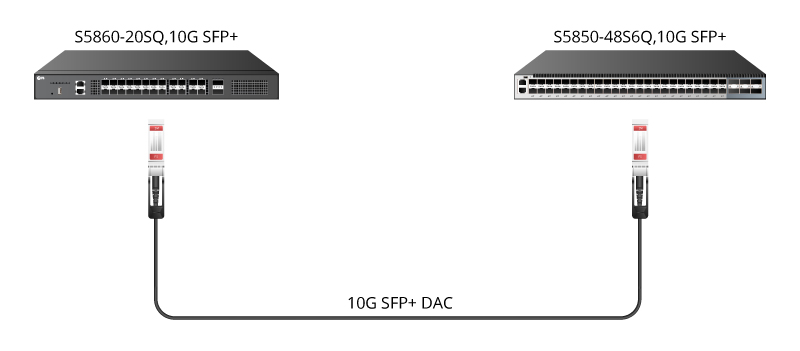10G Ethernet Cabling Solutions
The dramatic growth in business data throughput has led to increased demand and use for high-performing interconnects, storage devices and servers. The result is an increased expansion of higher speed Ethernet solutions, specifically 10 Gigabit Ethernet. This article explains what 10G Ethernet is in detail and introduces 10GbE cabling solutions and several application cases for your reference.
10G Ethernet Overview
10 Gigabit Ethernet (or 10GbE) is a telecommunication technology that offers data speeds up to 10 billion bits per second. It was first defined by the IEEE 802.3ae-2002 standard. 10GbE works only in full-duplex mode, which enables the transmission of data in both directions simultaneously on the same signal carrier.
10GbE technology is applicable to all kinds of network structures. It can reduce the complexity of the network, and also meet the needs of backbone network large-capacity transmission, solve the “bottleneck” problem of network transmission.
When talking about cabling solutions for 10GbE network, two broad categories of copper and optical fiber will be considered as a result. The following content introduces the two major 10GbE cabling solutions and several application cases involving 10G switches and modules for your consideration.
Fiber Optic Cabling
Generally, fiber optic cables can be divided into single-mode fiber (SMF) and multi-mode fiber (MMF). Both SMF and MMF systems can be used with 10GbE. MMF cabling supports distances of up to 300m, depending on the transceivers used and transmission speed. Compared with MMF, SMF cabling features lower modal dispersion and supports distances of up to 40km depending on transceivers, transmission speed and buffer credits for allocated switches.
Case1: Connecting two 10G SFP+ switches using fiber optic cable and two 10G SFP+ modules.
As an alternative, a 10G SFP+ AOC (Active Optical Cable) seems to be a more cost-effective choice. It is a fixed assembly that is purchased at a given length yet without sacrificing its transmission speed and distance. SFP+ AOC provides high performance in 10GbE network applications by using an enhanced SFP+ connector to send 10Gbps data through a pair of transmitters and receivers over a fiber optic cable.
Case2: Connecting two 10G SFP+ switches using 10G SFP+ AOC cable.
Copper Cabling
Currently, 10GBASE-T is the common technology that enables 10GbE operations over twisted-pair copper cabling systems. Cables must be certified to at least 500MHz to ensure 10GBASE-T compliance. Cat6a cables can deliver 10G performance up to 500 MHz and at a distance of up to 100m, which offers relatively great flexibility in network design due to its 100-meter reach capability. Cat6 cables are able to work in 10GBASE-T deployments too, but with a distance limitation of up to 55m.
To build a 10G copper network, there are generally two cabling solutions: 10GBASE-T switch with Cat6/6a cable, or 10G SFP+ switch with 10GBASE-T SFP+ transceiver.
Case3: Connecting two 10GBASE-T switches using Cat6 cable.
Another option is to use a 10G SFP+ DAC (Direct Attach Cable). Same as AOC cable, the connector fits into the same form factor connector and housing as fiber optic cables with SFP+ connectors. DAC cable is widely used in today’s 10GbE network interconnection. However, from a structured cabling viewpoint, it has a limited distance of up to 10m. It is a low-cost alternative to traditional twisted-pair copper cabling in data center deployments.
Case4: Connecting two 10G SFP+ switches using 10G SFP+ DAC cable.
Source: community.fs
Related products...
fiber-optic-cable
Rafsanjan 12-core fiber optic cable, multimode (12 * 1), OFC, SJ
fiber-optic-cable
fiber-optic-cable




















[ratings]